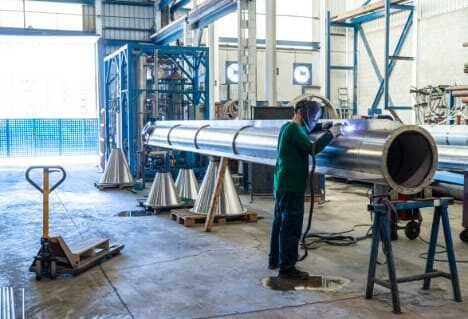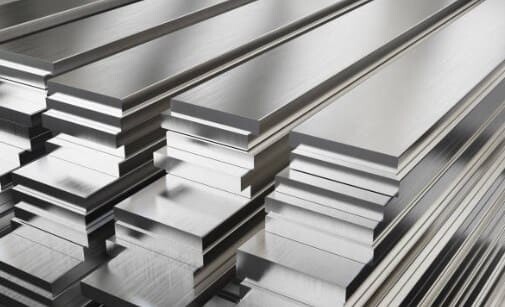Stainless steel, with its remarkable strength, corrosion resistance, and aesthetic appeal, has become an integral material in various industries, ranging from construction and automotive to medical and food production. However, welding stainless steel can be a daunting task, especially for those new to the craft. The diverse types of stainless steel, each with unique characteristics and welding requirements, add another layer of complexity. This comprehensive guide will delve into the three primary methods for welding stainless steel, discuss their pros and cons, and provide actionable tips to enhance your welding experience.
Understanding Stainless Steel: A Brief Overview
Before diving into the welding methods, it's essential to understand the basics of stainless steel. Stainless steel is an iron-based alloy containing a minimum of 10.5% chromium. This chromium content is responsible for the material's renowned corrosion resistance. The chromium forms a protective oxide layer on the surface, preventing rust and chemical interactions.
There are several types of stainless steel, each catering to different applications:
Austenitic Stainless Steel (e.g., 304, 316): Known for its excellent corrosion resistance and formability. Widely used in kitchenware, medical equipment, and marine applications.
Ferritic Stainless Steel (e.g., 430): Offers good corrosion resistance, especially in oxidizing environments, and is often used in vehicle trim and appliance parts.
Martensitic Stainless Steel (e.g., 410): Combines high strength and moderate corrosion resistance, making it suitable for cutlery and surgical instruments.
Duplex Stainless Steel (e.g., 2205): Provides both strength and corrosion resistance, ideal for marine and chemical processing environments.
Precipitation Hardening Stainless Steel (e.g., 17-4 PH): Known for high strength and corrosion resistance, commonly used in aerospace applications.
Understanding the specific type of stainless steel you are working with is crucial for selecting the appropriate welding method and ensuring optimal results.
1. Gas Tungsten Arc Welding (GTAW/TIG)
1) What is GTAW?
Gas Tungsten Arc Welding, commonly referred to as TIG welding, is a highly precise welding technique that utilizes a non-consumable tungsten electrode to produce an electric arc. The tungsten electrode is held in a torch, and the arc is formed between the electrode and the workpiece. This process melts the base metal and, if necessary, a filler metal is added to the weld pool. The entire process is shielded by an inert gas, such as argon or helium, to protect the weld area from atmospheric contamination, ensuring a clean and slag-free weld.

2) Advantages of GTAW
High-Quality Welds: GTAW is renowned for producing welds of exceptional quality, with minimal distortion and spatter.
Precision and Control: Ideal for welding thin sections and intricate parts where control over the weld pool is critical.
Versatility: Suitable for various materials, including stainless steel, aluminum, and other alloys.
Low Porosity Risk: The inert gas shielding minimizes the risk of porosity in the weld.
3) Disadvantages of GTAW
Skill Level: Requires a high level of skill and dexterity, making it challenging for beginners.
Time-Consuming: The process is slower compared to other welding methods.
Equipment Cost: High initial investment in equipment, including the torch and shielding gas supply.
4) Best Applications for GTAW
Thin Sections: Ideal for welding materials less than 3 mm in thickness.
Precision Work: Suitable for intricate parts where precision is paramount.
High-Purity Environments: Used in applications where contamination must be minimized, such as medical or food-grade equipment.
2. Gas Metal Arc Welding (GMAW/MIG)
1) What is GMAW?
Gas Metal Arc Welding, or MIG welding, employs a consumable wire electrode that is fed automatically through a welding gun. The wire electrode forms an electric arc with the workpiece, melting the base metal and creating the weld pool. The process is shielded by an inert gas, such as argon or carbon dioxide, to protect the weld from atmospheric gases.
2) Advantages of GMAW
High Speed: GMAW is significantly faster than GTAW, making it ideal for large-scale projects.
Ease of Use: Less skill-intensive than GTAW, making it more accessible to novice welders.
Consistent Welds: Produces consistent and reliable results with minimal variations.
Cost-Effective: Lower equipment and operational costs compared to GTAW.
3) Disadvantages of GMAW
Less Precision: Not as precise as GTAW, making it less suitable for intricate or delicate work.
Material Limitations: Primarily used for medium to thick sections of stainless steel.
Shielding Gas Requirements: Requires a constant supply of shielding gas, which can be a logistical challenge in certain environments.
4) Best Applications for GMAW
Medium to Thick Sections: Ideal for materials 3 mm and thicker.
Large-Scale Production: Suitable for high-volume manufacturing where speed and efficiency are crucial.
Outdoor Environments: Can be adapted for outdoor use with appropriate shielding.
3. Shielded Metal Arc Welding (SMAW)
1) What is SMAW?
Shielded Metal Arc Welding, commonly known as "stick" welding, uses a consumable electrode covered in flux to shield the weld area from atmospheric gases. The electrode is clamped in an electrode holder, and an electric arc is struck between the electrode and the workpiece. The flux coating on the electrode melts during welding, producing a protective layer over the weld pool, which also deoxidizes the metal and contributes additional filler material.
2) Advantages of SMAW
Portability: Equipment is simple and portable, suitable for remote or outdoor welding.
Low Initial Cost: Basic equipment requirements make it cost-effective for small-scale projects.
Penetration and Strength: Produces strong welds with deep penetration, ideal for thick materials.
Corrosion Resistance: The flux covering enhances the weld's resistance to corrosion.
3) Disadvantages of SMAW
Slag Removal: Requires post-weld slag removal, which can be time-consuming.
Spatter and Porosity: Can produce significant spatter and may lead to porosity if electrodes are not stored properly.
Skill Dependency: While less skill-intensive than GTAW, SMAW still requires practice to master.
4) Best Applications for SMAW
Thick Sections: Ideal for welding materials of significant thickness.
Remote Locations: Suitable for environments where portability and simplicity are essential.
Heavy-Duty Applications: Used in construction, shipbuilding, and other industries requiring robust welds.
Choosing the Right Method for Your Project
Selecting the most suitable welding method for your stainless steel project depends on various factors:

1. Material Thickness:
2. Equipment Availability:
GTAW: Requires specialized equipment and a reliable gas supply.
GMAW: Needs a wire feeder and continuous shielding gas.
SMAW: Basic equipment, ideal for environments with limited resources.
3. Skill Level:
4. Environment:
5. Desired Weld Quality:
Tips and Tricks for Welding Stainless Steel
Regardless of the method chosen, adhering to best practices will significantly enhance the quality of your welds.
1. Proper Material Preparation
Cleanliness: Stainless steel can easily be contaminated by dirt, oil, or grease. Always clean the material with a degreaser or acetone before welding.
Surface Preparation: Use a wire brush or sandpaper to remove any oxide layers or contaminants from the surface.
Drying: Ensure the material is completely dry before commencing welding.
2. Control of Heat Input
Stainless steel is sensitive to heat input due to its high thermal conductivity and low coefficient of thermal expansion. Excessive heat can lead to warping or burn-through, while insufficient heat may result in lack of fusion.
Adjust Welding Parameters: Use a lower amperage setting and a faster travel speed to minimize heat input.
Cooling: In between welding passes, allow the workpiece to cool to prevent thermal stress.
3. Selection of Filler Material
The filler metal should match the grade of the base metal to avoid compatibility issues, such as cracking or reduced corrosion resistance. For instance, use a 308 filler rod when welding 304 stainless steel.
4. Post-Weld Cleaning
Stainless steel welding often results in a discolored oxide layer on the weld area. Post-weld cleaning is essential to restore the material's corrosion resistance and aesthetic appeal.
Pickling and Passivation: Chemical methods to remove contaminants and restore the oxide layer.
Mechanical Polishing: Use abrasive tools to remove the oxide layer and achieve a smooth finish.
Electro-Polishing: An electrochemical process that enhances the material's corrosion resistance.
5. Practice and Skill Development
Welding is an art that requires practice to master. Even with the best equipment and techniques, poor execution can lead to defective welds.
Train on Scrap Metal: Before working on your actual project, practice on scrap pieces to refine your technique.
Monitor Weld Quality: Regularly inspect your welds for defects and adjust your technique accordingly.
Seek Feedback: Consult with experienced welders or refer to instructional resources to improve your skills.
6. Equipment Maintenance
Proper maintenance of your welding equipment is crucial for consistent and high-quality welds.
Clean and Lubricate: Regularly clean and lubricate moving parts to ensure smooth operation.
Inspect Consumables: Always check electrodes and welding wire for damage or contamination.
Gas Supply: Ensure a stable and adequate supply of shielding gas to prevent atmospheric contamination.
Conclusion
Welding stainless steel is a nuanced process that demands a combination of skill, knowledge, and the right tools. By understanding the strengths and limitations of each welding method and adhering to best practices, you can achieve high-quality, durable welds that meet your project requirements.
Megmeet Welding Technology is committed to providing cutting-edge welding solutions designed to enhance your welding experience. From state-of-the-art welding machines to expert advice and resources, Megmeet is your trusted partner in the pursuit of welding excellence.
For more insights, tips, and updates on the latest welding technologies, visit the Megmeet Welding Technology News Center or follow our LinkedIn page. Let us help you unlock the full potential of stainless steel welding and elevate your projects to new heights.
Related articles:
1. How To Clean Stainless Steel Welds After Welding? [Easiest Way]
2. Laser Welding Stainless Steel: Unlocking Precision and Efficiency
3. MIG Welding on Stainless Steel: Tips, Techniques, Applications
4. Stainless Steel Welding Distortion Causes and Solutions
5. Welding Methods of Stainless Steel Sheet (0.1~3.0mm thickness)





